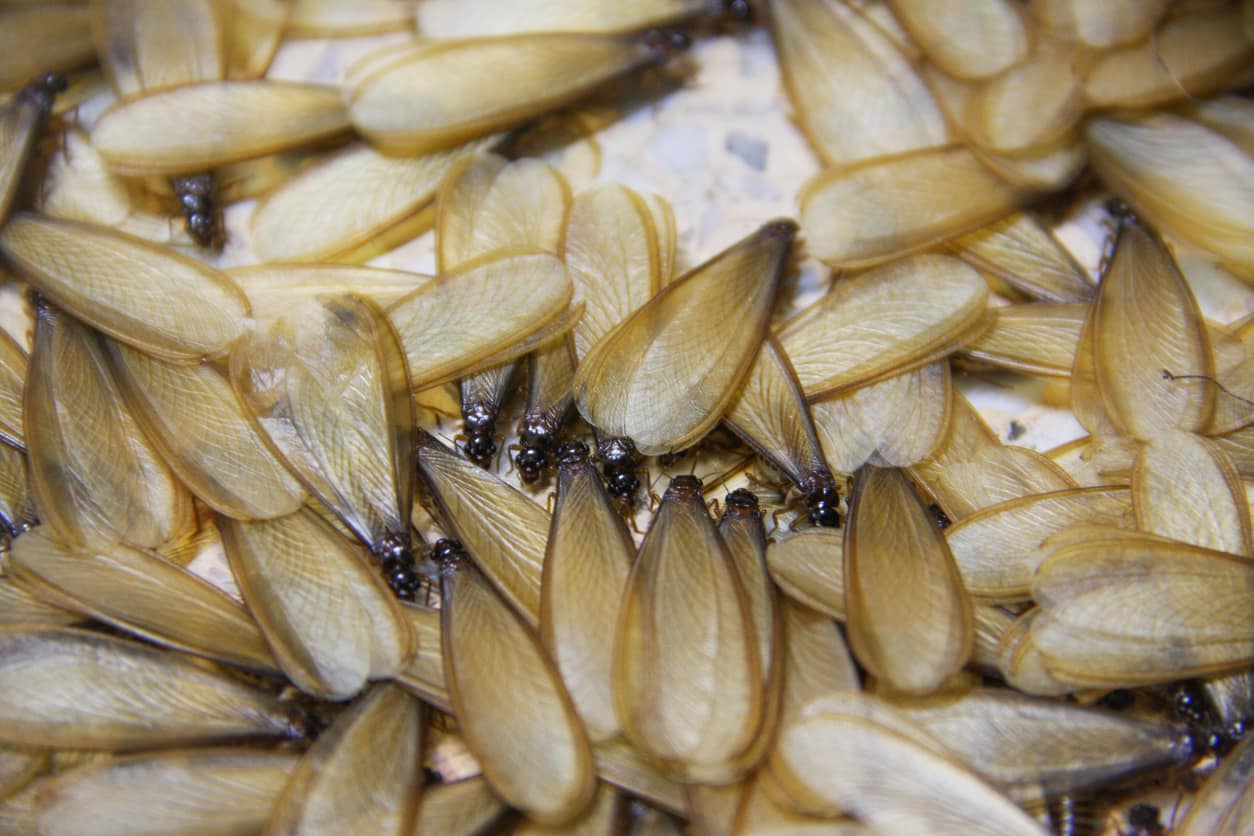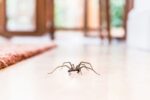
When & How Do Termites Swarm in South FL?
Every spring and summer, termites emerge from their nests in huge numbers. This event is called swarming and signals that the reproductive members of termite colonies in the area are leaving to reproduce and start new colonies — maybe at your house if they can. These adult and winged termites are called alates, swarmers, or reproductives.
These unsightly termites with wings are most active during the springtime, but will swarm into summer and fall, as well. Peak termite swarm activity typically occurs on warm, humid days after a rain shower from February through July, but here in warm and humid South Florida with more species of various infesting termites, swarms can be seen year-round.
If you see these alates, or winged termites, around your home or business, it’s important to contact a pest control professional immediately. Termites are a serious threat to any structure and can cause extensive damage if left untreated.
What Are Termites?
Termites are small, winged insects that are closely related to cockroaches. Termites are considered one of the most destructive pests of homes and other structures and do billions of dollars of damage per year. A termite colony can contain millions of termites and can cause extensive damage to a structure in a relatively short period of time. These destructive pests are found throughout the world and are especially common in warm, humid climates like those in South Florida.
Quick facts about termites
- Termites are social insects that live in colonies.
- A termite colony can contain millions of termites.
- There are three main types of termites: workers, soldiers, and reproductives.
- The worker termites are responsible for collecting food and building the nest.
- The soldier termites protect the colony from predators.
- The reproductive termites are responsible for creating new colonies — these are the termites that grow wings and swarm as “alates.”
- Termites are sometimes called “white ants” because they are often mistaken for ants.
- Termites are not harmful to humans and do not carry diseases, but can be devastating to your home if left untreated.
What Does It Mean When Termites Swarm?
To the untrained eye, termites with wings known as alates, or swarmers, may just look like another type of flying insect. But to those in the know, termites with wings signify the beginning of the termite swarming season. Here in South Florida, the termite swarming season typically runs from February through July.
During this time, termites with wings will take flight in search of a mate to start a new termite colony. If you see termites with wings around your home, it’s important to take action right away. Killing swarmers will have no impact on existing colonies, so if you see termites with wings in or around your home, contact Hulett right away for a comprehensive (and free!) inspection.
Identifying Termites With Wings
Florida is home to several different species of ants, some of which also have winged reproductive types that you may confuse for swarming termites. There are a number of ways that you can tell whether you are looking at a winged ant or a winged termite:
- Termites have two pairs of wings that are equal in size and shape. Ants have two pairs of wings, but the front pair is larger than the back pair.
- A termite’s wings are also longer than its body, while an ant’s wings are shorter.
- The termite has a straight waistline where the abdomen meets the thorax (the middle section of the body), while the ant’s waistline is constricted. A termite also has straight antenna, rather then bent.
If you are encountering either winged ants or winged termites on your property, contact Hulett right away to request a free inspection. The sooner you are able to address an infestation, the better.
Protecting Your Home From Termites
There are several things you can do to discourage termites from taking up residence in your home, but at the first sign of termites, you should contact a professional immediately. Some ways that buildings can decrease their chances of getting termites include:
- Check your home regularly for signs of termites, such as wings or discarded wings near windowsills or doors.
- Make sure there is no wood-to-soil contact around your home.
- Reduce moisture levels in and around your home by fixing leaks and ensuring proper drainage.
- Store firewood, lumber, and other cellulose materials away from your home.
- Reduce exterior lighting during swarm season.
- Contact Hulett to discuss a termite prevention plan
If you do find termites in or around your home, it’s important to call a professional pest control company like the team at Hulett right away. A trained technician will be able to properly identify the type of termite and develop a treatment plan accordingly.
Contact Us For Your Free Termite Inspection
Remember, taking action early is the best way to prevent termites from causing serious damage to your home. If you think you may have termites, don’t wait – just call Hulett!




